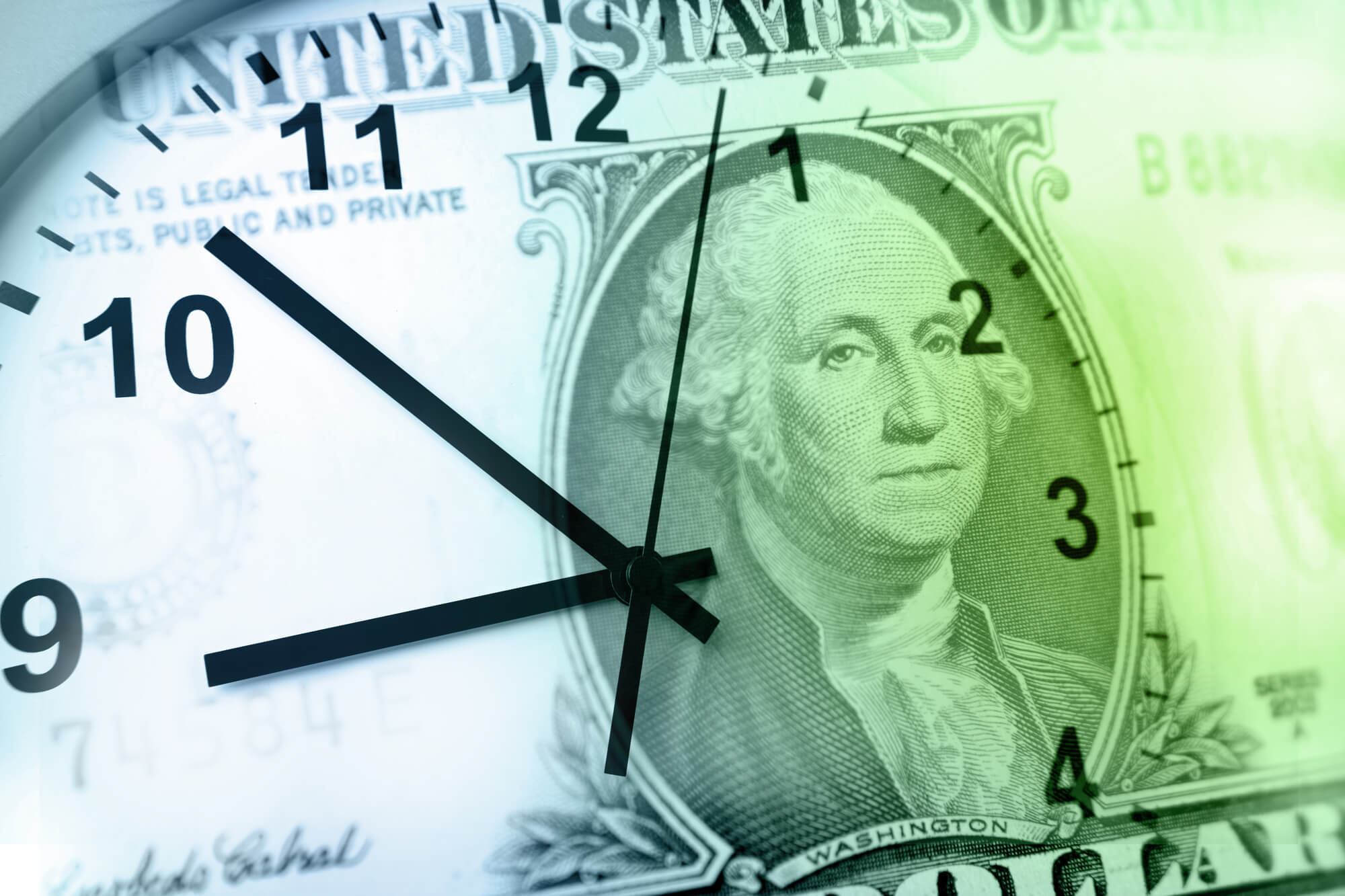Are you trying to fast track your way to financial independence? There may be one thing you can do above all else to help ensure the quickest way there.
The single most important thing you can do to become financially independent fast is to make more money and invest it. Cutting your expenses and increasing your savings rate can also help, but making more money will have a quicker return on your time than anything else – cutting down the months, years, or even decades it could take to achieve financial independence.
Remember, money is limitless and there isn’t a cap on how much you can make. Continue reading to see just how helpful making more money can be to quicken your way to independence.
The Fastest Way to Become Financially Independent
There are many things that will help you on your journey to financial independence. All of them are important in guiding you to make changes to your overall financial health. All of them will make you more financially balanced. However, there’s one thing you can do – more than anything else – to help you get there faster.
Make more money.
Above all else, increasing the rate at which you can make and invest money is the one thing you can do to reach financial independence faster. If your earnings increase, you will quickly outpace your efforts to cut back on expenses. While it’s important to understand your costs and avoid frivolous spending, you’ll eventually reach a point where it’s increasingly difficult to save more. As you optimize your spending habits, there becomes less and less wiggle room with your finances. The rate at which you can save begins to lessen, and you eventually hit a floor of saving where you can’t save more without encroaching on the resources you need to survive. It is not possible to spend less than $0.
Conversely, there isn’t a limit to how much money you can make. True, you may have a job with an annual salary and some additional compensation as part of your overall package. Those amounts may be capped, but your earning potential isn’t! It is possible for you to get a higher paying job, or to get additional jobs – all of which will increase the amount of money you make.
As an example, let’s say your annual salary is $75,000, your annual expenses are $50,000, and your FI number is $1,250,000. It would take 50 years saving $25,000 each year to reach your FI number. However, if you were able to keep your annual expenses constant at $50,000 and instead increased your income, you could reach financial independence much quicker.
| Annual Expenses | Annual Income | Annual Savings | FI Number | Years to FI (Without Compounding) |
| $50,000 | $50,000 | $0 | $1,250,000 | – |
| $50,000 | $60,000 | $10,000 | $1,250,000 | 125 |
| $50,000 | $75,000 | $25,000 | $1,250,000 | 50 |
| $50,000 | $100,000 | $50,000 | $1,250,000 | 25 |
| $50,000 | $150,000 | $100,000 | $1,250,000 | 12.5 |
| $50,000 | $200,000 | $150,000 | $1,250,000 | 8.3 |
| $50,000 | $300,000 | $250,000 | $1,250,000 | 5 |
| $50,000 | $500,000 | $450,000 | $1,250,000 | 2.8 |
Increasing your income by 33% from $75,000 to $100,000 would cut down your journey to FI by 50% – half the amount of time!
If you’re used to smaller, more incremental increases to your pay, know that those increases count. If you were to increase your income by 5% each year (a little bit more than the average yearly rate of inflation in the US) you’d be able to reach FI in under 19 years.
| Annual Expenses | Annual Income (5% More) | Annual Savings | Amount Saved | Year |
| $50,000 | $75,000 | $25,000 | $25,000 | 1 |
| $50,000 | $78,750 | $28,750 | $53,750 | 2 |
| $50,000 | $82,688 | $32,688 | $86,438 | 3 |
| $50,000 | $86,822 | $36,822 | $123,259 | 4 |
| $50,000 | $91,163 | $41,163 | $164,422 | 5 |
| $50,000 | $95,721 | $45,721 | $210,143 | 6 |
| $50,000 | $100,507 | $50,507 | $260,651 | 7 |
| $50,000 | $105,533 | $55,533 | $316,183 | 8 |
| $50,000 | $110,809 | $60,809 | $376,992 | 9 |
| $50,000 | $116,350 | $66,350 | $443,342 | 10 |
| $50,000 | $122,167 | $72,167 | $515,509 | 11 |
| $50,000 | $128,275 | $78,275 | $593,784 | 12 |
| $50,000 | $134,689 | $84,689 | $678,474 | 13 |
| $50,000 | $141,424 | $91,424 | $769,897 | 14 |
| $50,000 | $148,495 | $98,495 | $868,392 | 15 |
| $50,000 | $155,920 | $105,920 | $974,312 | 16 |
| $50,000 | $163,716 | $113,716 | $1,088,027 | 17 |
| $50,000 | $171,901 | $121,901 | $1,209,929 | 18 |
| $50,000 | $180,496 | $130,496 | $1,340,425 | 19 |
Increasing your income by 10% each year would decrease your timeline even further.
| Annual Expenses | Annual Income (10% More) | Annual Savings | Amount Saved | Years to FI |
| $50,000 | $75,000 | $25,000 | $25,000 | 1 |
| $50,000 | $82,500 | $32,500 | $57,500 | 2 |
| $50,000 | $90,750 | $40,750 | $98,250 | 3 |
| $50,000 | $99,825 | $49,825 | $148,075 | 4 |
| $50,000 | $109,808 | $59,808 | $207,883 | 5 |
| $50,000 | $120,788 | $70,788 | $278,671 | 6 |
| $50,000 | $132,867 | $82,867 | $361,538 | 7 |
| $50,000 | $146,154 | $96,154 | $457,692 | 8 |
| $50,000 | $160,769 | $110,769 | $568,461 | 9 |
| $50,000 | $176,846 | $126,846 | $695,307 | 10 |
| $50,000 | $194,531 | $144,531 | $839,838 | 11 |
| $50,000 | $213,984 | $163,984 | $1,003,821 | 12 |
| $50,000 | $235,382 | $185,382 | $1,189,203 | 13 |
| $50,000 | $258,920 | $208,920 | $1,398,124 | 14 |
Finding ways to increase your income by 15% each year would mean being able to hit your FI number in just over 10 years.
| Annual Expenses | Annual Income (15% More) | Annual Savings | Amount Saved | Years to FI |
| $50,000 | $75,000 | $25,000 | $25,000 | 1 |
| $50,000 | $86,250 | $36,250 | $61,250 | 2 |
| $50,000 | $99,188 | $49,188 | $110,438 | 3 |
| $50,000 | $114,066 | $64,066 | $174,503 | 4 |
| $50,000 | $131,175 | $81,175 | $255,679 | 5 |
| $50,000 | $150,852 | $100,852 | $356,530 | 6 |
| $50,000 | $173,480 | $123,480 | $480,010 | 7 |
| $50,000 | $199,501 | $149,501 | $629,511 | 8 |
| $50,000 | $229,427 | $179,427 | $808,938 | 9 |
| $50,000 | $263,841 | $213,841 | $1,022,779 | 10 |
| $50,000 | $303,417 | $253,417 | $1,276,196 | 11 |
Knowing your financial independence number will allow you to start working backwards with how long it will take to reach FI. Having a target increase for your income each year is a great way to set goals and expedite your journey. Knowing how much you need each year will help you find ways to make that extra money. Remember that your earning potential is limitless, and the more you make the more time you’ll have to enjoy the things you want out of life.
The Golden Combination: Making and Investing
To quicken your pace to financial independence even further, invest the money you’re making. Using our examples above, let’s see what would happen if you were to save and invest the same amount of money each year.
Annual Salary: $75,000
Annual Expenses: $50,000
Annual Savings: $25,000 ($75,000 – $50,000)
FI Number: $1,250,000
Years to reach FI: 50 ($1,250,000 / $25,000)
Now, if you took that $25,000 of savings each year and invested it with an expected annual rate of return of 7%, you’d get the following:
Annual Salary: $75,000
Annual Expenses: $50,000
Annual Savings: $25,000
Expected Rate of Return: 7%
FI Number: $1,250,000
Years to reach FI: 22
Simply by investing your savings each year, it would only take you 22 years to reach your FI number – less than half the time from our original example. That means the return on your investment is the equivalent of increasing your income to $100,000 but without actually getting paid more. Returns of 7% can decrease your timeline by more than 50%!
Even better, the sweetest spot will be to increase your income and invest it. Let’s say you were able to increase your annual income from $75,000 to $100,000 and your expenses remained constant.
Annual Salary: $100,000
Annual Expenses: $50,000
Annual Savings: $50,000
Expected Rate of Return: 7%
FI Number: $1,250,000
Years to reach FI: 15
A single bump in your annual income and properly investing it year over year can shave 35 years off your timeline to financial independence! The more you make and invest, the more time you’re getting back. As you continue to do so, you’ll significantly cut down on your timeline to financial freedom overall.
Making More Money Increases Your Savings Rate Quicker Than Cutting Expenses
The other side of the equation is also true. The more money you make, the more money you should be saving. It’s possible to cut your expenses back several hundreds, thousands, or tens of thousands of dollars each year (depending how much you’re spending) – and you should, where appropriate. But the biggest returns on your expenses comes from cutting back on your highest expenses: housing, food, and transportation. Once you optimize your major categories, your savings rate won’t increase as quickly because you’ll be spending less on smaller categories of your typical expenses. For example, let’s break down $50,000 annual expenses into a hypothetical monthly budget.
| Annual Expenses | Monthly Expenses |
| $50,000 | $4,167 |
| Expenses | Monthly Costs | % of Budget |
| Housing | $1,458 | 35% |
| Transportation | $833 | 20% |
| Food | $625 | 15% |
| Insurance | $417 | 10% |
| Clothes | $167 | 4% |
| Dine Out | $208 | 5% |
| Entertainment / Hobbies | $208 | 5% |
| Subscriptions | $125 | 3% |
| Other | $125 | 3% |
If your annual income was $75,000 you’d have a savings rate of 33.3%, since you’re saving $25,000 of your annual income.
If you were to cut back on your major spending categories by 15% each, your monthly spending would go down $437 / month, or $5,249 / year.
| Expenses | Monthly Costs | % Decrease | Adjusted Budget | Savings |
| Housing | $1,458 | 15% | $1,239 | $219 |
| Transportation | $833 | 15% | $708 | $125 |
| Food | $625 | 15% | $531 | $94 |
Your new annual expenses would decrease to $44,751, and your savings rate would increase to 40%. You could continue to cut back on these major categories, as well as the additional categories of your budget. But while this method is important, it simply won’t get you to financial freedom as quickly as increasing your income will.
Let’s continue with our example. If your annual expenses were $50,000 and you increased your income from $75,000 to $85,000 your savings rate would go from 33% to 41%. A simple pay increase will change your savings rate instantly – something you could achieve by asking for a raise or finding a higher paying job.
Additionally, you can only cut back on saving so much. You’ll always need to eat, sleep, and work. Everything else may not be necessary per say, but how much can you cut back without negatively impacting the overall quality of your life? Of course you should live within your means, but a modest apartment or home is still saving you more money than if you were living in a luxury apartment or mansion. Enjoying home-cooked meals will be cheaper than eating out every day, but spending on organic produce may be worth the extra price for the health benefits as well. The point is that it will be easier to find more ways to increase your income than it will be to cut down on your expenses. If you can find the right level of spending for you or your family, every cent you make beyond that will increase your savings rate.
| Annual Expenses | Annual Income | Annual Savings | Savings Rate |
| $50,000 | $50,000 | $0 | 0% |
| $50,000 | $60,000 | $10,000 | 17% |
| $50,000 | $75,000 | $25,000 | 33% |
| $50,000 | $100,000 | $50,000 | 50% |
| $50,000 | $125,000 | $75,000 | 60% |
| $50,000 | $150,000 | $100,000 | 67% |
| $50,000 | $175,000 | $125,000 | 71% |
| $50,000 | $200,000 | $150,000 | 75% |
| $50,000 | $250,000 | $200,000 | 80% |
| $50,000 | $300,000 | $250,000 | 83% |
| $50,000 | $500,000 | $450,000 | 90% |
How to Make More Money
Now that you know that you don’t need to compromise your quality of life to increase your savings rate, you’ll want to begin finding more ways to make money. Remember, there isn’t a limit on your earning potential. It has an infinite upside compared to the diminishing downside of saving. There are many ways to make money. Here are a few simple ideas to help you expedite your journey to financial freedom.
Ask For A Raise
It may be as simple as that – asking. Speak with your boss to see how you’re performing at your company. Do some research to understand your value on the market, and come prepared to show your findings. Ask for a percent increase instead of a dollar amount.
Earn a Promotion
Take some courses to learn or deepen your skills. Get certifications for your discipline. You can even learn entirely new skills to make yourself more valuable for a role that’s higher paying at your company. Transitioning within your company may be an option if a promotion is harder to reach.
Side Hustle
Find a way to pad your salary with additional income. Walk dogs, tutor, become a freelance writer, etc. There are many options out there for you to maximize your time and your earnings. You can work for someone or work for yourself if you’re looking for greater flexibility with your time. You may also find ways to make money doing something you love, like photography or painting.
Start a Business
If you have an idea for a product or service, you can start your own side business. The idea here is to create leverage with your time. Is there a skill you have that you can digest into a course? Is there a product you can create that solves a specific problem for people? You can build something once and sell it infinitely – to anyone that finds value in it!
Make Money Online
It’s never been easier to make money online. You can inventory your stuff and sell things on eBay or through consignment shops or websites. You can start a blog, a YouTube channel, or create websites for other businesses. The internet can be an incredible pool of customers to tap into for your services.
Create Passive Income
Developing a passive income stream means setting something up that can provide income to you perpetually with little to no effort on your part. You could rent out your properties and have a company manage them, or become an Airbnb host. You could write a book and receive royalties on it after publication. You can make music and do the same thing. You can build an app for people or receive ad revenue on a website you’ve made. Your efforts setting up passive income will pay dividends on your time and your income.
Conclusion
Remember, making more money is the fastest way to become financially independent. The more money you make, the faster your savings rate will increase – much quicker than cutting back on expenses. There’s a limit to how much you can scrape and save, but there’s no limit on your ability to earn more money. While your time may be limited to 24 hours a day, you can leverage your time by setting up passive streams of income. The more you do so, the less time you’ll have to spend making money. The fastest way to the top isn’t just about working harder, but working smarter.
Climb on, Finbase.
J









